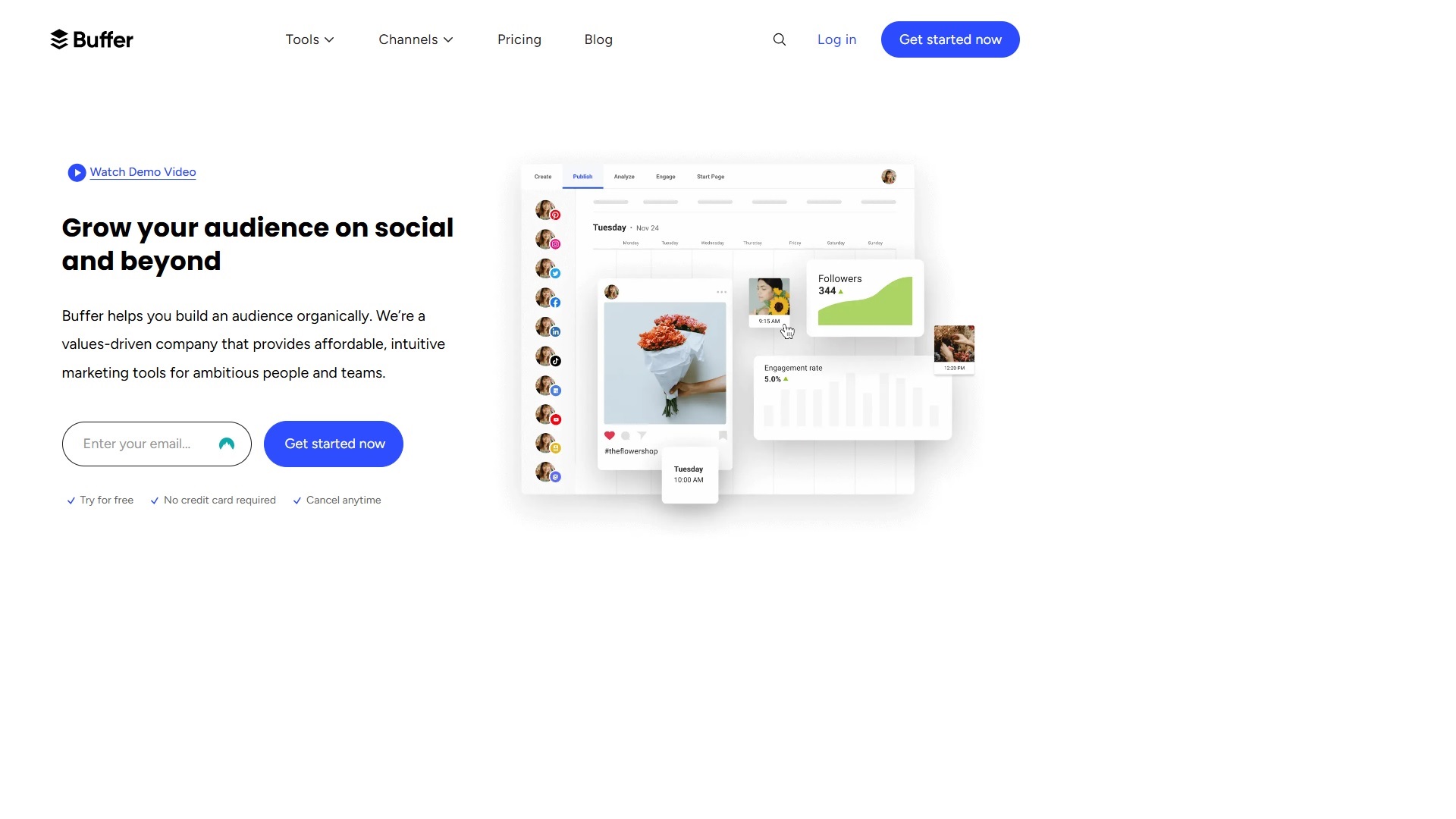Real-World Example: A Lean Startup Success Story
In the fast-paced business world, success often comes from innovation and adaptation. A lean startup defied the odds and emerged victorious. It implemented lean principles, focused on rapid iteration, and valued customer feedback. This approach helped it quickly develop and launch a product that met the needs of its target market.
As a result, the startup achieved impressive growth and carved out a place in the industry.
Understanding Lean vs. Agile Approaches in Startups
Dropbox: Simplifying Cloud Storage

Dropbox simplified cloud storage using the lean startup approach. It started with a basic product and shared a 3-minute video to gauge interest and get good feedback. By testing prototypes and making changes based on feedback, Dropbox improved the cloud storage experience. The company focused on launching a primary product, getting customer feedback, proving business ideas, and making product improvements.
This way, Dropbox showed how it effectively used lean startup principles to test its business ideas and make successful products. This made the cloud storage experience more straightforward for users than other options.
Buffer: Social Media Management’s Growth

Buffer used various social media strategies, such as referral programs and partnerships, to expand and reach new audiences.
They followed the lean startup methodology, focusing on a minimal viable product (MVP) to test ideas, gather feedback, and make improvements quickly.
This method helped Buffer validate their business ideas, refine their product, and grow their user base effectively.
By prioritizing early adoption and seeking feedback, Buffer developed a loyal customer base and became a leader in social media management.
Slack: Streamlining Team Communication
![]()
Slack has made team communication easier for businesses. It allows real-time messaging, file sharing, and integration with other tools. Its user-friendly interface, searchable message history, and customizable notifications make it practical for team collaboration. Slack’s integration with apps like Google Drive and Trello enhances its functionality.
Compared to other platforms, Slack stands out with its focus on creating channels for specific projects or topics. This helps organize conversations and keep relevant team members in the loop. It also facilitates direct messaging, voice and video calls, and the sharing of essential documents, making it a preferred choice for streamlining team communication.
Detailed Examination of Dropbox’s Success
Origin Story: Identifying a Universal Need
A company can find out what people want using the lean startup method. This involves launching a basic product version to get customer feedback and check for correct business ideas. This helps the company see if many people wish to use the product. The company can also try prototypes with customers and improve based on their feedback, as General Electric did with its FastWorks program.
Finding a universal need helps a startup succeed and grow by lowering the chance of the product not working and finding new markets quickly. When a company focuses on a universal need, it can create products that many people like and are likely to do well in the market. Companies like Dropbox, Buffer, and Slack have used this approach successfully.
Minimal Viable Product (MVP) and Early Adoption
The MVP approach aims to launch a basic product version with just enough features to satisfy initial customers and gather feedback. This differs from traditional product development. It emphasizes quick iteration and feedback implementation rather than extensive, time-consuming feature development.
Early adoption strategies can be used to validate and improve an MVP in a startup setting. These strategies involve targeting early adopters willing to try new products, providing feedback, and advocating for the product. By engaging with these early adopters, startups can quickly refine and enhance their MVPs based on real-world usage and feedback.
Successful examples of companies that have effectively used MVP and early adoption strategies include:
- Dropbox is launching a 3-minute screencast to gauge consumer interest
- Zappos testing the hypothesis of selling shoes online by posting local shoe store inventory on an essential website
- General Electric is adopting lean startup principles through a FastWorks program that emphasizes testing prototypes with consumers and iterating them based on feedback.
Growth Strategy: Referral Programs and Partnerships
Leveraging a solid referral program can help startups grow. It drives customer acquisition and retention. The program should offer clear incentives for the referring and new customers, creating a mutually beneficial relationship. Startups should focus on providing a seamless referral process. Clear communication and easy tracking ensure a positive experience.
Partnerships with other businesses or organizations can contribute to startup growth. They open up new opportunities for exposure and customer acquisition. Strategic collaborations allow startups to leverage their partners’ existing customer base and brand reputation. This expands their reach and increases credibility within their target market. Partnerships also lead to cost savings, resource access, and knowledge sharing, essential for startup growth.
Implementing referral programs and partnerships for growth strategy may have potential challenges and obstacles. Difficulties in measuring the success and ROI of referral programs are common. Ensuring fairness and transparency in the process is essential to avoid negative impacts on the brand’s reputation. Regarding partnerships, startups may face issues such as misalignment of goals and expectations, conflicting brand values, or a lack of communication and commitment from the partner. These issues can hinder the overall effectiveness of the collaboration.
Recognized Publications for Lean Startup Learning
The Lean Startup by Eric Ries: A Primer

The Lean Startup by Eric Ries is based on launching a minimum viable product to get customer feedback, validate business hypotheses, and iterate product releases. This approach focuses on rapid market testing, adaptation, and iterative product development.
Companies like Dropbox, Buffer, and Slack used the Lean Startup concepts, starting with minimum viable products to gauge customer interest and gather feedback.
For example, Dropbox began as a minimum viable product and used a 3-minute screencast to gauge customer interest. Buffer quickly learned to adapt and grow their social media management platform from customer feedback.
Entrepreneurs can learn from Dropbox’s success by recognizing the universal need for file storage and sharing. They can also develop a minimal viable product that addresses this need and focuses on efficient customer feedback loops and rapid iteration.
Additionally, they can implement growth strategies based on customer feedback, such as Dropbox’s initial use of a referral program to incentivize user growth.
Running Lean by Ash Maurya: Operational Tactics

“Running Lean by Ash Maurya” is about implementing lean methodologies in a business. It discusses identifying target customers, evaluating problems and solutions, and testing assumptions with a minimal viable product. The book highlights the importance of rapid iteration and feedback to validate business hypotheses and develop successful products. Unlike traditional approaches, “Running Lean” focuses on more minor, iterative product releases and continuous customer feedback.
It gives real-world examples of companies like Dropbox, Zappos, and General Electric using lean startup principles effectively. These examples show how they tested their ideas through MVPs, validated their hypotheses with consumer feedback, and iterated their product releases based on insights gained.
The Four Steps to the Epiphany by Steve Blank: Building the Customer Base

“The Four Steps to the Epiphany by Steve Blank” helps startups build their customer base. It provides a framework for validating business ideas and products through customer feedback.
The book outlines key principles and methodologies for effectively reaching and understanding the customer base. It involves launching a minimum viable product to gain valuable customer insights, validating business hypotheses, and iterating product releases based on feedback.
Entrepreneurs and business owners can use the strategies and insights from the book to foster customer growth and loyalty. This includes focusing on customer-centric product development, testing prototypes with consumers, and rapidly iterating products based on customer feedback.
Implementing Lean Methodologies in Your Business Venture
Lean methodologies can be added to a business by launching a minimum viable product, making prototypes quickly, and using iterative development. Tools like value stream mapping and 5S can help find and eliminate wasteful practices, making operations smoother and more efficient.
When using lean methodologies, it’s essential to keep improving and focus on the customer’s needs. For example, processes should be reviewed and considered regularly, and customer feedback should be prioritized in product development. These working methods fit with lean methods and encourage innovation and decision-making that puts the customer first in the company.

Vizologi is a revolutionary AI-generated business strategy tool that offers its users access to advanced features to create and refine start-up ideas quickly.
It generates limitless business ideas, gains insights on markets and competitors, and automates business plan creation.


